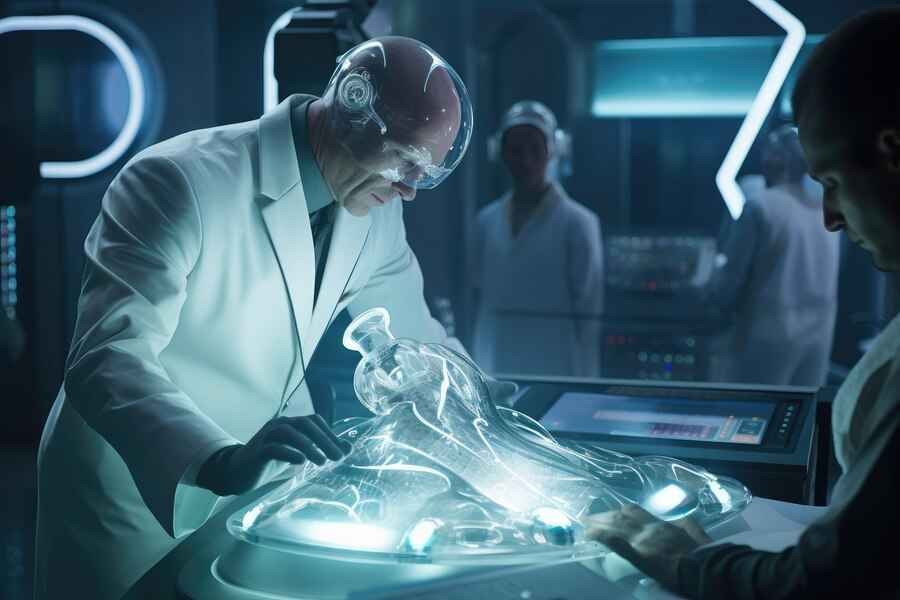Intubation is a critical, life-saving procedure in healthcare, helping patients maintain an open airway during surgeries, emergencies, and severe respiratory illnesses. Recent advancements in medical technology for intubation have revolutionized this process, enhancing safety, precision, and efficiency. Facilities that use cutting-edge medical technology for intubation are at the forefront of this change, utilizing innovative devices and tools that make airway management safer and more effective.
This comprehensive guide will delve into the latest technologies transforming intubation practices, explore the top facilities utilizing these innovations, and examine how these advancements are setting a new standard in medical care.
What is Intubation and Why is It Essential in Healthcare?
Intubation is the insertion of a tube into a patient’s airway to ensure it remains open, providing continuous access to oxygen when the body cannot manage it independently. This is crucial in surgeries requiring anesthesia, emergencies where breathing is compromised, and for patients with severe respiratory conditions like COVID-19.
While intubation saves lives, it’s a complex procedure with potential risks, including airway trauma, infection, and incorrect tube placement. As a result, facilities that use cutting-edge medical technology for intubation have turned to advanced devices that improve both accuracy and patient outcomes.
The Latest Advancements in Medical Technology for Intubation
The innovations in intubation technology are vast and varied, ranging from advanced imaging tools to artificial intelligence-assisted devices. Here’s a breakdown of some key advancements reshaping intubation:
1. Video Laryngoscopes
Video laryngoscopes use small cameras to visualize the airway, enabling more precise and accurate placement of the tube. Unlike traditional laryngoscopes, which rely on direct line-of-sight, video laryngoscopes provide high-resolution images on an external screen, improving visibility in complex cases. This has made video laryngoscopy a valuable asset in facilities that use cutting-edge medical technology for intubation, significantly reducing errors.
2. Optical Stylets and Fiber-Optic Bronchoscopes
Optical stylets and fiber-optic bronchoscopes allow healthcare providers to navigate the airway with increased flexibility and precision, especially in patients with challenging anatomy. These tools guide the intubation tube with visual support, reducing trauma to the airway and making the procedure faster and safer. Many top facilities use fiber-optic tools as a reliable solution in difficult intubation cases.
3. AI and Machine Learning Integration
Artificial intelligence (AI) and machine learning (ML) play an increasingly critical role in healthcare, and intubation is no exception. AI systems analyze data in real-time, offering predictive insights on the likelihood of complications or difficulty in airway management. By training AI models on large datasets, hospitals can offer real-time guidance during intubation, allowing providers to make informed decisions. Facilities that use cutting-edge medical technology for intubation often incorporate AI to improve patient safety and predict potential issues before they arise.
4. Robotic-Assisted Intubation
Robotic-assisted intubation combines AI technology with robotic precision, allowing for even greater accuracy in high-stakes intubation scenarios. The robot’s arm can control the intubation tool with millimeter precision, which is especially beneficial in trauma or emergency settings where speed is critical. Robotic assistance is becoming more prevalent in facilities that are dedicated to pushing the envelope in medical technology for intubation.
5. Simulation-Based Intubation Training with Virtual Reality (VR)
Facilities that use cutting-edge medical technology for intubation invest heavily in training healthcare providers using virtual reality (VR) simulations. These VR programs replicate real-life scenarios, allowing providers to practice difficult cases without putting patients at risk. By training with VR, providers can refine their skills and learn new techniques that improve patient outcomes during real intubation procedures.
Top Facilities in the U.S. Using Cutting-Edge Medical Technology for Intubation
With rapid advancements in intubation technology, several facilities in the United States are leading the way. These hospitals have invested significantly in state-of-the-art tools and training programs, making them pioneers in the use of cutting-edge medical technology for intubation.
1. Johns Hopkins Hospital (Baltimore, MD)
Johns Hopkins is renowned for its world-class medical research and advanced healthcare technologies. The hospital uses video laryngoscopes, fiber-optic bronchoscopes, and AI-integrated devices to enhance intubation accuracy. Johns Hopkins also operates advanced research and simulation labs, developing new approaches to intubation safety and efficacy.
2. Mayo Clinic (Rochester, MN)
Mayo Clinic’s dedication to patient safety has led to substantial investments in cutting-edge intubation technology. With facilities equipped with video-assisted tools, robotic intubation devices, and AI-powered predictive systems, Mayo Clinic consistently ranks among the best hospitals for critical care. Their simulation centers also incorporate VR training for staff, ensuring that healthcare providers are equipped to handle complex intubation cases.
3. Cleveland Clinic (Cleveland, OH)
Known for its commitment to innovation, Cleveland Clinic uses some of the most advanced intubation tools available. From video laryngoscopes to robotic assistance, the hospital has pioneered technology-driven approaches that reduce intubation risks. Cleveland Clinic has implemented AI-assisted intubation for real-time risk assessment, offering unparalleled patient safety during these critical procedures.
4. Massachusetts General Hospital (Boston, MA)
Massachusetts General Hospital’s approach to intubation combines high-tech tools with thorough training. Their use of optical and video-assisted technology, alongside fiber-optic bronchoscopes, allows for safer airway management. The hospital also has an extensive research program dedicated to airway management, constantly testing new technologies to further refine their procedures.
5. Cedars-Sinai Medical Center (Los Angeles, CA)
Cedars-Sinai is a leading facility for advanced medical procedures, especially in respiratory care. The hospital utilizes AI algorithms to predict patient outcomes during intubation, providing doctors with real-time guidance. Their specialized respiratory care units are equipped with robotic-assisted devices, giving the facility a reputation for excellence in intubation safety and innovation.
The Role of Simulation Centers in Intubation Training
Facilities that use cutting-edge medical technology for intubation recognize the importance of proper training, especially for high-risk procedures. Simulation centers play a crucial role in this training, offering hands-on experiences without putting patients at risk.
1. Why Simulation Training Matters for Intubation
Intubation can be complex, particularly in patients with unique airway anatomy or respiratory complications. Simulation centers provide healthcare providers with lifelike experiences, where they can practice on VR models and advanced manikins. This type of training builds confidence and expertise, preparing staff to handle even the most difficult intubations with skill and precision.
2. Simulation Centers Leading in Intubation Training
Many of the hospitals mentioned, such as Johns Hopkins, Mayo Clinic, and Cleveland Clinic, operate simulation centers equipped with VR tools and AI-driven systems. These centers help practitioners refine their skills in a low-risk environment, allowing them to stay updated on the latest in intubation technology.
Key Benefits of Using Cutting-Edge Technology for Intubation
The benefits of facilities that use cutting-edge medical technology for intubation are evident in improved patient outcomes, reduced risks, and enhanced training. Here’s a closer look at some specific advantages:
1. Increased Patient Safety and Reduced Complications
Advanced technology like video laryngoscopes and fiber-optic tools helps avoid common risks associated with intubation, such as airway trauma or incorrect tube placement. Robotic and AI-assisted devices further enhance safety, particularly in challenging cases.
2. Enhanced Precision and Efficiency
With real-time imaging and guidance, healthcare providers can achieve greater accuracy in intubation, reducing the need for adjustments and ensuring the tube is placed correctly on the first attempt. This precision saves time and improves overall efficiency.
3. Superior Training for Healthcare Providers
Training using cutting-edge simulation technologies creates better-prepared providers. VR training, combined with AI feedback, allows practitioners to learn from each session and refine their skills, leading to greater competence in real-life procedures.
Challenges and Considerations in Implementing Advanced Intubation Technolog
While the advantages of cutting-edge medical technology in intubation are clear, certain challenges must be considered. Facilities aiming to implement these technologies often face obstacles such as costs, training requirements, and adapting to constant advancements.
1. High Costs and Accessibility
Advanced intubation technology requires significant investment, making it more accessible to larger facilities with substantial funding. Smaller hospitals may find it challenging to afford these tools, creating a disparity in care quality based on facility size.
2. Training and Skill Requirements
Not every healthcare provider is trained to operate sophisticated intubation devices. Facilities must invest in extensive training programs, as these tools require specialized skills that take time and practice to master.
3. Adapting to Technological Changes
Medical technology is continually evolving, and facilities must regularly update their equipment and training programs to stay current. This rapid pace of change can be challenging for institutions to keep up with, especially regarding costs and retraining staff.
The Future of Intubation Technology in Healthcare
Looking ahead, the future of intubation technology holds exciting potential. From further advancements in AI to fully automated robotic intubations, the next decade promises to bring even greater innovations to facilities that use cutting-edge medical technology for intubation.
1. Expanded Role of AI and Predictive Analysis
AI is expected to become even more sophisticated, enabling healthcare providers to predict and address potential complications before they arise. This will make intubation safer and allow for a more customized approach tailored to each patient’s unique needs.
2. Potential for Fully Automated Intubation
With advances in robotics, fully automated intubation is a possibility on the horizon. Robots could one day be programmed to perform intubation autonomously, reducing the chance of human error and standardizing the procedure.
3. Integration of Augmented Reality (AR) in Training and Procedures
Augmented reality (AR) offers another avenue for training and guidance during intubation. With AR, providers could receive real-time visual cues overlaid on the patient, aiding in precise placement and navigation, especially in difficult cases.
Conclusion
Facilities that use cutting-edge medical technology for intubation are reshaping the landscape of healthcare, making airway management safer and more effective. From video laryngoscopes and fiber-optic bronchoscopes to AI and robotic assistance, these innovations minimize risks and enhance patient outcomes.
The top hospitals leading this movement—such as Johns Hopkins, Mayo Clinic, Cleveland Clinic, Massachusetts General Hospital, and Cedars-Sinai—are setting new standards by integrating advanced technology and intensive training programs. As technology continues to evolve, we can expect even more groundbreaking advancements in intubation, ultimately leading to safer, more efficient, and highly precise procedures.
FAQs
What is the most advanced technology currently used in intubation?
Video laryngoscopes and robotic-assisted intubation systems are among the most advanced technologies in use, offering precision and improved safety during intubation.
Are advanced intubation technologies accessible in most hospitals?
Advanced intubation technology is more commonly found in large hospitals with significant resources. Smaller facilities may have limited access due to the high cost.
How do training centers use simulation for intubation?
Simulation centers use VR and AI-driven models to replicate real-life intubation scenarios, allowing providers to practice in a controlled, risk-free environment.
What are the risks associated with traditional vs. advanced intubation methods?
Traditional intubation methods rely on direct visualization, which can lead to complications if the view is obstructed. Advanced methods like video laryngoscopy offer a clearer view, reducing the risk of trauma and incorrect placement.
Can AI and robotics fully replace manual intubation?
While AI and robotics assist with precision and decision-making, human expertise is still essential. However, future advancements may lead to greater automation in simpler intubation procedures.



